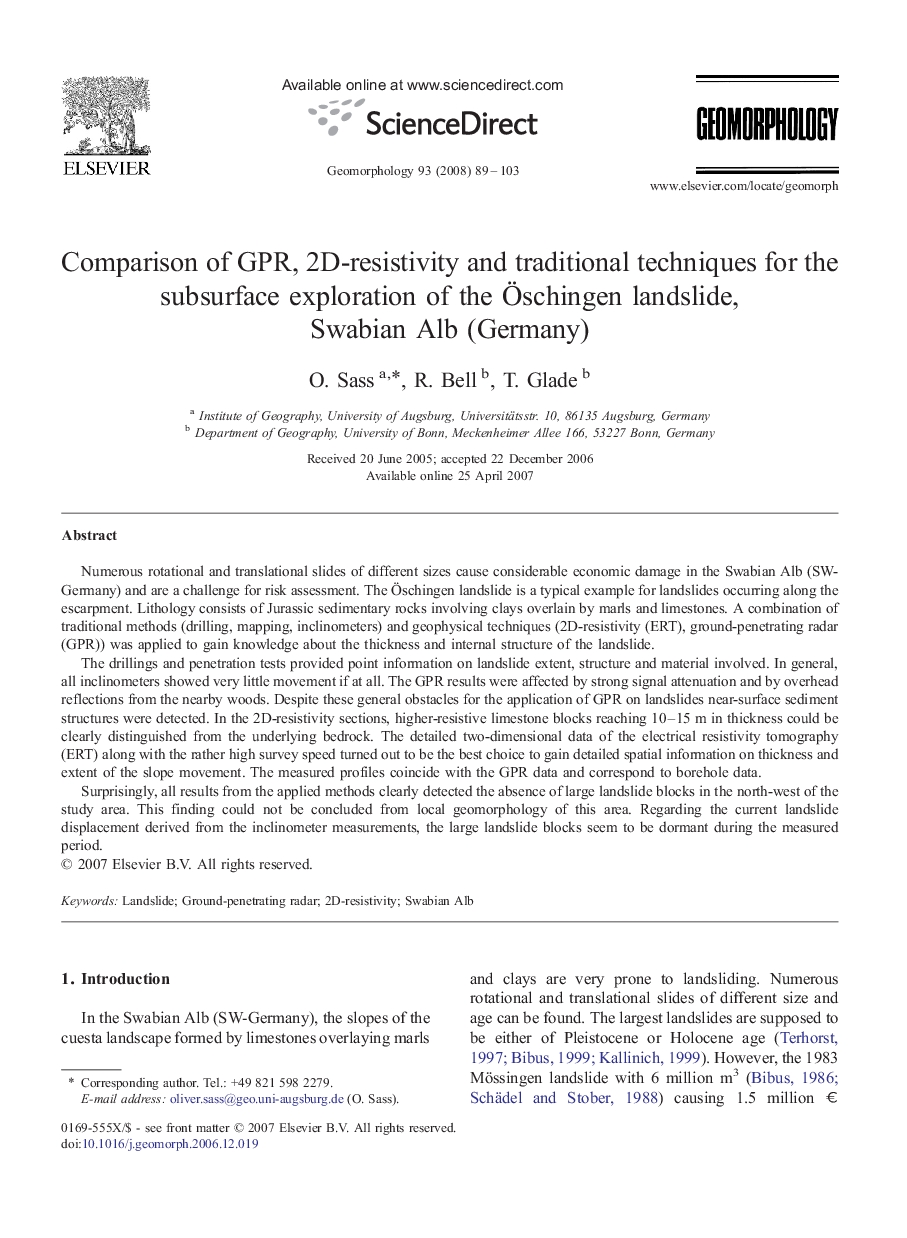| کد مقاله | کد نشریه | سال انتشار | مقاله انگلیسی | نسخه تمام متن |
|---|---|---|---|---|
| 4687093 | 1635567 | 2008 | 15 صفحه PDF | دانلود رایگان |

Numerous rotational and translational slides of different sizes cause considerable economic damage in the Swabian Alb (SW-Germany) and are a challenge for risk assessment. The Öschingen landslide is a typical example for landslides occurring along the escarpment. Lithology consists of Jurassic sedimentary rocks involving clays overlain by marls and limestones. A combination of traditional methods (drilling, mapping, inclinometers) and geophysical techniques (2D-resistivity (ERT), ground-penetrating radar (GPR)) was applied to gain knowledge about the thickness and internal structure of the landslide.The drillings and penetration tests provided point information on landslide extent, structure and material involved. In general, all inclinometers showed very little movement if at all. The GPR results were affected by strong signal attenuation and by overhead reflections from the nearby woods. Despite these general obstacles for the application of GPR on landslides near-surface sediment structures were detected. In the 2D-resistivity sections, higher-resistive limestone blocks reaching 10–15 m in thickness could be clearly distinguished from the underlying bedrock. The detailed two-dimensional data of the electrical resistivity tomography (ERT) along with the rather high survey speed turned out to be the best choice to gain detailed spatial information on thickness and extent of the slope movement. The measured profiles coincide with the GPR data and correspond to borehole data.Surprisingly, all results from the applied methods clearly detected the absence of large landslide blocks in the north-west of the study area. This finding could not be concluded from local geomorphology of this area. Regarding the current landslide displacement derived from the inclinometer measurements, the large landslide blocks seem to be dormant during the measured period.
Journal: Geomorphology - Volume 93, Issues 1–2, 1 January 2008, Pages 89–103